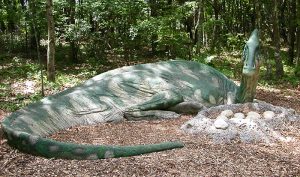
The reproductive behaviors of birds are some of their most conspicuous and endearing qualities. From the colorful mating display of some birds, like peacocks, to the building of nests by nearly all birds, these are the characters we use to define birds and make them popular study subjects. One peculiar aspect of some birds is communal nesting, where multiple breeding pairs lay eggs in the same nest. This most famously occurs in ostriches, who can have several females lay their eggs in one nest that is tended by one dominant female.
The reasons why this behavior may have evolved are unclear, especially when it’s known that the females who share a nest are often unrelated. Knowing when this behavior evolved may help elucidate its evolutionary history. Now, thanks to research by Tzu-Ruei Yang and his colleagues, we know this behavior may have its origins back in the ancestors of birds, dinosaurs.
Dr. Yang, of the Universita?t Bonn in Germany, and his colleagues, Jasmina Wiemann and Beate Spiering also of Universita?t Bonn, Anneke Van Heteren of the Zoologische Staatssammlung Mu?nchen in Germany, and Chun-Jung Chen of the National Museum of Natural Sciences in Taiwan, used the chemical composition of the fossil eggs shells in one nest to determine if they were laid by different mothers. This had been proposed before, but wasn’t backed by multiple lines of evidence. “Dinosaur behaviors that are unlikely to be preserved in fossilization could be elucidated by chemical analysis more unambiguously”, said Yang.
The team used a peculiarity of egg laying physiology: birds of different ages lay eggs with different phosphorous content in their shells. Also, different birds lay eggs of different shapes. It turns out that the same was true for dinosaurs. So by examining the eggs from one nest, they could determine if they were laid by different mothers, and they were. The nests that were examined were of oviraptorid dinosaurs, two-legged carnivorous dinosaurs (theropods) closely related to the group that evolved into modern birds. Said Dr. van Heteren, “This research shows how important interdisciplinary collaborations are to unveal the truth about the past.”
Note: The above post is reprinted from materials provided by Society of Vertebrate Paleontology.










